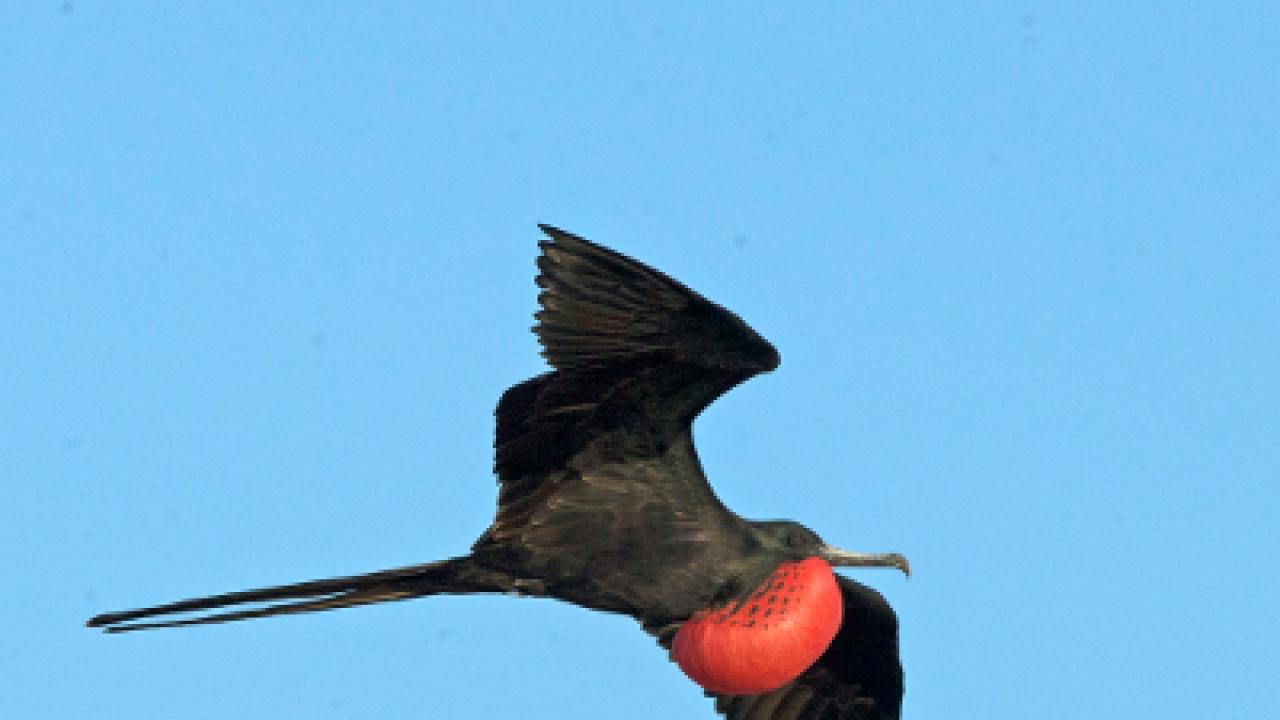
Migratory birds and man-made gliders are able to exploit warm atmospheric air currents, or thermals, to extend their flying range and minimize their expenditure of energy, a strategy named thermal soaring. Even though this behavior requires complex decisions and long-term strategies, the entire process can be portrayed in simple models of animal behavior that require only a few pieces of information, according to new research co-conducted at ICTP.
The research attempts to identify effective strategies of navigation in turbulent airflow, and is the result of a collaboration between ICTP researcher Antonio Celani and colleagues at the University of California San Diego's (UCSD) Department of Physics and the Salk Institute for Biological Studies. The work makes use of computer simulations, which enabled the researchers to identify birds' best strategies for course plotting, and even figure out how to exploit turbulent fluctuations.
As frequently observed by glider pilots, migrating birds are able to identify and travel on thermals more precisely than humans, and without the empowerment of modern instrumentation. Which kind of information is available to birds remains instead an open problem. A crucial part of successful thermal soaring is to identify an atmospheric current and to maintain flight at its core, where the lift is generally the largest, providing the biggest boost into the sky. When migratory birds have climbed up to the top of the thermal they glide down to the next one and repeat the process. However, rising atmospheric currents are not visible, and it is difficult to predict them or to evaluate their potential for ascent.
In order to understand how migratory birds develop efficient strategies to exploit thermals, researchers tried to find out which local information, such as temperature or wind speed, is necessary to find and exploit thermals. Scientists also investigated whether birds, who have no means to predict the evolution of the atmospheric dynamics, can learn thermal soaring. In order to point out that feature, they used computer algorithms able to simulate the birds' flight and to build an effective learning strategy based on trial-and-error, called reinforcement learning approach.
"We performed numerical simulations of the atmospheric boundary layer which display, as observed in reality, an irregular sequence of thermal rising and descending currents amid a background of strong velocity fluctuations,” says Celani, member of ICTP’s Quantitative Life Sciences section. “Then, we implemented our learning algorithm to detect which combination of parameters, the local cues, were necessary to obtain the best results in terms of soaring efficiency. Surprisingly, in order to achieve excellent flying strategies only two pieces of information are required: vertical acceleration, and torque, the tendency of wind-force to make the bird roll,” explains the researcher, adding, “After hundreds of trials, upon incentivizing right choices of flying paths and penalizing the wrong ones, our computational bird learns to find the next thermal with a very high success rate.” The emergent strategy depends much on the level of turbulence, as states Celani. “In the strongly turbulent regime, flying strategies tend to become more conservative in order to avoid potentially misleading paths, which are then quite expensive in terms of wasted energy.”
To further investigate and confirm the theoretical findings, Celani and his colleagues are now turning to real experiments: “Our cooperation with UCSD and Salk continues, and they are now working on small-scale remotely controlled gliders that implement our strategy. Given the potential for unmanned aerial vehicles in commercial applications, the theoretical study and the proof-of-concept of these minimal energy expenditure systems are quite important.”
The study, titled ‘Learning to soar in turbulent environments’, has been published in the Proceedings of the National Academy of Sciences (doi: 10.1073/pnas1606075113).
--Alessandro Vitale
















